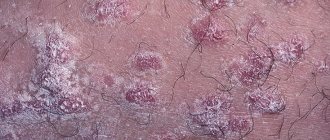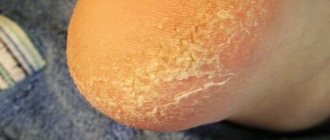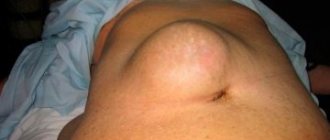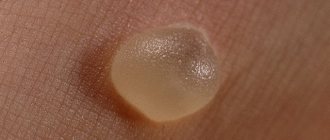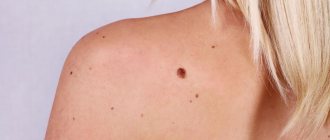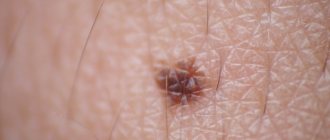Rating: No rating
A careless stay in the open scorching sun can result in many days of suffering. After sunburn, the skin not only becomes red and very hot, it subsequently becomes blistered, itchy and very itchy. In the end, the moment of peeling and peeling of the skin comes, and this greatly spoils the appearance and mood . Instead of a beautiful, even tan, you get an uneven shade and “tattered” skin. At this moment, the most important question arises - how to avoid this and what needs to be done.
Why does my skin peel?
There are many reasons that can cause peeling of the skin: diseases, increased insolation or chapping of the skin, irritating effects of soaps and shampoos. In short, everything that can cause accelerated death of skin cells. These common causes of desquamation (separation of scales) are determined empirically; they can be eliminated without the involvement of specialists.
- frequent hot baths, sauna . The skin adapts to high temperatures, but pays for it with increased cell wear. At a more physiological temperature, these phenomena disappear completely
- constant use of hard washcloths causes mechanical damage to skin cells;
- household chemicals can provoke contact (allergic) dermatitis. In this case, it is necessary to perform skin tests, identify the allergen and replace the provoking agent with an analogue that does not contain a component that is aggressive to the skin.
- low humidity, chapping - cause dry skin, which also causes peeling;
- unbalanced or insufficient nutrition, vitamin deficiency . The skin requires a certain balance of nutrients and vitamins, otherwise the epidermal cells die faster. Peeling is a symptom of vitamin deficiency due to retinol (A) deficiency;
- age-related changes also lead to accelerated cell death.
Peeling can be a symptom of various diseases. In case of abundant or atypical separation of scales, an urgent consultation with a dermatologist is necessary.
Non-pathological causes of dry and itchy skin
Among people who consulted dermatologists about dry skin, only 40% were found to have any pathologies that led to the development of xerosis. In other cases, doctors dealt with healthy individuals who had problems with skin care. Among these factors, the most common are:
- Frequent baths. It has been noticed that dry skin and itching all over the body are especially disturbing immediately after taking a hot bath with abundant use of gels and scrubs.
- Swimming in the sea. Salts dissolved in water remain on the dermis, tightening it.
- Excessive insolation. A long stay on the beach or in the solarium dries out the skin.
- The influence of cold. Areas of the skin not protected by clothing may lose moisture from exposure to cold wind and frost.
- Dry indoor air. Air conditioners and heating devices dry out the air in the room, which necessarily affects the dermis.
- Natural age-related changes. In old age, xerosis is detected in 75% of people.
Seborrheic dermatitis
It mainly affects the head and face area, causing red, scaly spots on the skin, incl. scalp, dandruff. The disease is caused by the fungus malassezia furfur, or more precisely, by reduced host immunity. Fungi of this family live on everyone’s skin, but are activated only in certain cases. Seborrheic dermatitis is similar to a number of more unpleasant conditions, so consultation with a dermatologist in this case is mandatory.
For a normal life with seborrheic dermatitis, three principles are used: constant hydration, reduction of inflammation, exfoliating measures . Special medicinal shampoos, creams, masks are selected. The disease usually resolves with normalization of the immune or hormonal status.
How to speed up the process of peeling skin
You can speed up the peeling process by gently scrubbing:
- use a mixture of sugar with almond or sea buckthorn oil , applying to the skin with massage movements;
- boil and then cool a mixture of olive oil and the remaining coffee grounds, which should be applied to the skin with massage movements every time you shower;
- Use a soft sponge , gently working over all areas of the skin.
If, after completely exfoliating your skin after tanning, you end up with an uneven skin tone, or a too dark shade, then use the useful recommendations by following the link on how to get rid of a tan.
Dry eczema
A skin disease accompanied by dryness and cracking. It is often a consequence of contact or food dermatitis. It appears more in winter due to dry air. It is formed due to a hereditary predisposition in combination with exposure to an allergen. By removing the allergic component, you can gradually get rid of this condition. To do this, it is enough to contact your local physician to prescribe the so-called. "skin tests". As a result, you will find out which substance you have a specific reaction to. In any case, try to avoid contact with the allergen in the future.
It is advisable to continue care, especially softening and moisturizing measures, even after the course of therapy.
Diagnosis of dry itchy skin
As a rule, an experienced dermatologist or a doctor of any other specialization needs a simple visual examination to understand the condition of the skin and find out how moisturized they are. A special point is to find out why dry areas of skin itch. In this case, the specialist is helped by a complete history taking, and sometimes a comprehensive examination.
Signs of dry skin:
- unnaturally smooth and shiny surface,
- itching, redness,
- roughness, flabbiness,
- complaints of tightness,
- cracks,
- reduced turgor.
Neurodermatitis - provocation by a stress factor
As a result of constant or single strong (reactive) stress, numerous nodular formations appear on the folds, neck, arms, and body. The skin becomes dry and rough. The disease is accompanied by severe itching, irritability, and sleep disturbances. When exposed to stress, itching intensifies. In a calm environment, the affected areas heal and stop itching. With a new attack, itching appears in a random area, not necessarily at the site of previous scratching. An interesting feature of this disease is that the skin itches only where it can be scratched.
In the process of treating neurodermatitis, consultation with a neurologist is highly desirable. The disease can be overcome only when the main stress factor is eliminated.
Systemic lupus erythematosus
Usually causes flaking, where the scales look like push pins. The skin under the scales is bright red. SLE is a dangerous systemic connective tissue disease that requires immediate treatment. In this case, the key doctor is a rheumatologist, since these specialists deal with autoimmune diseases.
Early diagnosis and treatment of lupus erythematosus is a matter of great importance. If left untreated, the lungs, nervous system, and kidneys are affected, even leading to death.
The disease is incurable, but it is possible to convert SLE into an inactive (dormant) form, which will significantly slow down the destructive process. The main treatment method is hormonal anti-inflammatory drugs. In addition, during periods of exacerbation, courses of plasmapheresis are carried out. Stem cell transplantation techniques exist to treat SLE, but they are quite expensive and there is little research on the effectiveness of this method. Periodic courses of vitamin therapy are mandatory.
Any form of lichen is manifested by constant peeling
Psoriasis (squamosal lichen) - silvery scales that form characteristic plaques. For unknown reasons, some areas of the skin decide to accelerate their development cycle. The peeling and strange shapes of the spots and the color of the scales are caused by the rapid rate at which skin cells are replaced.
The first lesions appear on the rubbing elements of the skin - elbows, knees, and the skin of the buttocks. In the future, psoriatic plaques can appear everywhere, incl. on the scalp and skin of the genital organs. Unlike fungal infections or eczema, psoriasis occurs on the outer, rubbing part of the joint. The disease is seasonal - it worsens in winter, or when provoked by sunburn in summer. Treatment allows you to slow down the development of the process and reduce peeling.
Pityriasis versicolor appears as spots of varying colors - from white to brown. The skin in these areas peels, and mild itching is possible. The spots tend to enlarge and merge, up to the entire area of the affected part of the body. The disease is caused by a fungus. The easiest (home) way to determine the diagnosis is to apply a 2% iodine solution to the spot and surrounding skin. If the spots are darker, it is pityriasis versicolor (this is how the fungus reacts to iodine).
It is treated for a long time, under the supervision of a dermatologist. Solariums, beaches, etc. are prohibited.
Pityriasis rosea (scaly roseola) is an acute disease that is not prone to chronicity. Leaves the patient independently 2 months after the start. It begins with the appearance of a maternal plaque, then numerous rashes form throughout the body. The rash is rarely located on the face - mainly on the chest and limbs. The scales form a sort of collar of scales around the center of the main plaque. The color of the elements is mainly pink, changing to brown as the disease progresses.
Most patients experience itching and flaking. Pityriasis rosea is treated only symptomatically - ointments and creams are prescribed to reduce discomfort.
What to do if it peels and peels
If you still failed to avoid sunburn, and your skin became blistered and began to itch and peel, then you can smooth it out in simple and accessible ways:
- You can restore the skin and improve its health with herbal decoctions (chamomile or sage), using them for compresses;
- will help soothe and heal the skin ;
- sour cream, kefir, yogurt will help relieve hypermia and soften dry skin .
Never apply petroleum jelly, lanolin or creams containing alcohol to burnt skin.
Herpes zoster (shingles)
It has nothing to do with true lichens. It is caused by one of the herpes viruses - the one that causes chickenpox in children (Herpes zoster). Rashes in this form are located along the arches of one of the intercostal nerves.
The disease is accompanied by peeling and intense itching and pain. In addition, after a herpes attack, the healing tissues can impinge on the nerve endings, which causes severe pain. Herpes zoster especially often affects older people.
One form of disease prevention is chickenpox (history). If your child has had chickenpox, he will not be at risk for herpes zoster in old age. Treatment is standard for herpes infection (antiviral drugs). The disease is prone to recurrence.
Causes
The following factors can provoke itching on the skin of the face:
- Prolonged exposure to the sun. Ultraviolet radiation is one of the most common causes of skin irritation.
- Smoking, alcohol abuse.
- Chronic stress, overwork, frequent neuroses, depression.
- Frequent consumption of fried, smoked, pickled and other unhealthy foods.
- Susceptibility of the epidermis to high humidity and heat. Itching can also be caused by a so-called cold allergy. It occurs in the winter season, when the air temperature drops below zero.
- Using low-quality, expired cosmetics.
- Internal ailments (malignant tumors, chickenpox, diabetes, scabies, measles).
- Allergy to food products, mainly to fermented milk products, citrus fruits.
- Congenital or acquired dry skin. It can occur due to the use of alcohol-containing products and soaps with the effect of dissolving the fatty film. The latter must be used with extreme caution, since fat plays the role of a protective barrier for the dermis. Its absence causes cracks to appear through which infection can penetrate.
- Uncontrolled use of medications.
- Skin diseases (demodex, psoriasis, rosacea, seborrhea).
Rosacea
Skin mycosis (fungal infection)
Characterized by peeling skin with constant itching. Local redness of the skin appears, usually round or oval in shape. With mycosis, blisters often form in the affected area.
The fungus tends to spread, so the peeling areas grow. Typical is the addition of mycosis of the feet and nails, as well as mycosis of the perineum. Mycosis of the scalp is accompanied by severe dandruff.
The likelihood of curing mycosis increases with timely contact with a dermatologist. Chronic mycosis is not only difficult to treat, but also provokes the development of other diseases - genital herpes, psoriasis, etc.
Almost any skin lesion is associated with a disruption of the mechanisms of local and general immunity of the body. If you want to get rid of itching, red spots and flaking of the skin for a long time, consult an immunologist.
Traditional medicine
You can also eliminate discomfort at home. There are a large number of recipes for restoring and renewing the skin. But be careful, you may be allergic to some ingredient. Be sure to do a test before using the product. Here are some of the most popular home remedy recipes:
Softening lotion
To relieve redness and prevent the infection from progressing, use lotion. It will make the skin restoration process faster, relieve itching, remove peeling, and improve intracellular processes. To prepare it you will need:
- still mineral water (100 ml);
- sea buckthorn oil (20 ml);
- salicylic acid (5 ml).
Fill a small cosmetic bottle with water, add salicylic acid and sea buckthorn oil. Shake the bottle well before use. Apply lotion to skin morning and evening. Before doing this, do not forget to cleanse your skin using special products.
Anti-irritation mask
A mask made from natural ingredients heals cracks, relieves itching, and has a softening effect on problem areas of the skin. You will need these ingredients:
- cucumber (1 pc.);
- aloe juice (1 tablespoon);
- sandalwood essential oil (2 drops).
Peel the cucumber and grate it. Mix the resulting pulp with aloe juice and sandalwood oil. Apply the mixture to your face and apply a damp cloth or napkin. Keep the mask on for about 30 minutes, then thoroughly cleanse your face. Repeat the procedure at least 3 times a week.
Mask to restore damaged skin
Redness and itching are often caused by sunburn. Over time, age spots and small wrinkles appear on the face. To avoid this, you should moisturize your skin regularly. The most popular and effective remedy is a mask. To prepare it at home, you will need:
- potatoes (1 pc.);
- sour cream (1 tablespoon);
- avocado oil (1 tablespoon).
Peel the potatoes, grate them or grind them in a blender. Mix potatoes with cold sour cream and avocado oil. Cleanse the skin, then spread the mask over the entire face (except for the eyelids and area around the mouth). After 20 minutes, rinse off the product. To prevent your skin from flaking, apply the mask daily for 7 days.
Skin metabolic disorders due to changes in hormonal status
- the use of hormonal contraceptives often causes dryness and flaking of the skin and is the cause of a fungal infection. The fact is that selecting an individual dose of a hormone is a rather delicate process, and the drugs available on the market cannot take into account all the nuances of your body. In these cases, consultation with a gynecologist-endocrinologist helps. Manufacturers' assurances about the complete harmlessness of this product should not be trusted;
- the beginning of sexual activity , separation from a regular partner also in some cases cause peeling of the skin and provoke profuse dandruff;
- During pregnancy, such phenomena are considered normal, but they may not stop after childbirth. If the above symptoms persist, consult an endocrinologist;
- diseases of the thyroid gland, adrenal glands, and hypothalamic-pituitary system always affect the condition of the skin. If there is a sudden deterioration in your health and itching or flaking appears, get examined. When the underlying disease is compensated, these symptoms disappear.
What to do and how to deal with it
When sunbathing in the sun, you must take precautions:
cosmetics with a high ultraviolet for your beach holiday
- burn cream;
- suntan lotion;
- after-sun emulsion;
- panthenol (in case of skin redness).
2. Do not stay in the open sun for a long time. Create shadow areas.
3. If possible, stop taking medications , especially antibiotics.
4. Rinse off sea salt every time you return from the beach. Salt is very drying to the skin and can cause irritation.
A balanced diet that is rich in vitamins A, B and E has a good restorative effect on the skin.
to drink clean, cool water throughout the day .
Find out about the new beauty procedure, instant tanning, by clicking on the link instant tanning reviews.
Video about systemic lupus erythematosus
- Author: Julia
I decided to follow in the footsteps of my mother, who works in a rural clinic, and become a doctor. She graduated from school with a gold medal, was the best student, but when she came to the city to enter medical school, she failed the exam. Rate this article:
- 5
- 4
- 3
- 2
- 1
(9 votes, average: 3.3 out of 5)
Share with your friends!
Possible consequences of skin cancer - doctors' forecasts and statistics
Eyebrow tattooing - causes and possible consequences of a popular cosmetic procedure
